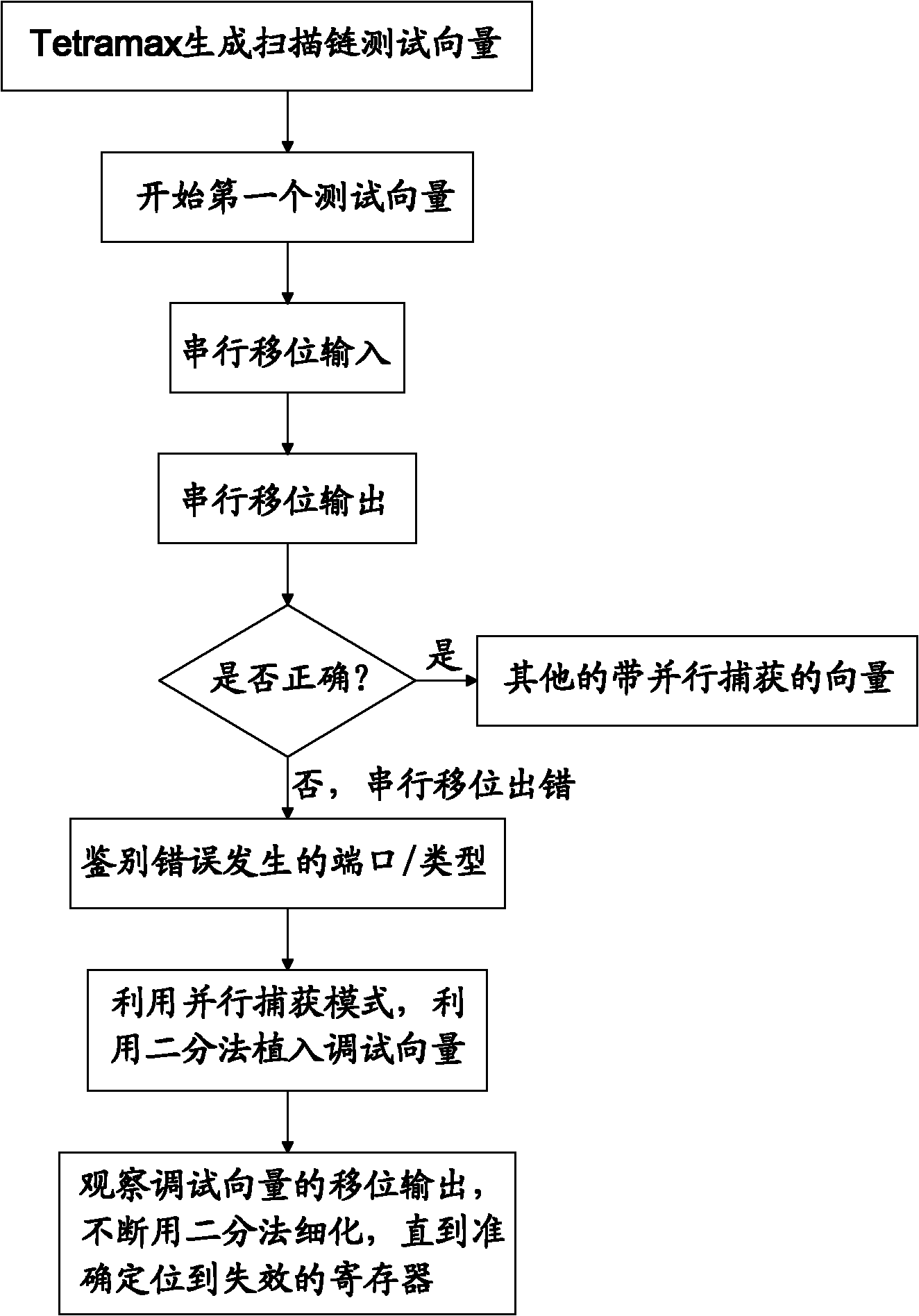Scan chain-based method for testing memory
A memory testing and scan chain technology, applied in the field of memory testing based on scan chain, can solve problems such as inability to locate, test, and inability to function module circuits, and achieve the effect of improving coverage.
- Summary
- Abstract
- Description
- Claims
- Application Information
AI Technical Summary
Problems solved by technology
Method used
Image
Examples
Embodiment Construction
[0026] A memory test method based on scan chains, such as figure 2 As shown, the specific description is as follows:
[0027] Step 100: Tetramax (an eda tool that automatically generates scan chain test vectors) generates scan chain test vectors; the first test vector of Tetramax usually only has serial shifting, that is, only serial shifting is performed into -> serial The shift out operation is used to test the correctness of the serial shift. The usual pattern of this vector is 00110011...,
[0028] Step 200: start the first test vector;
[0029] Step 300: serial shift input;
[0030] Step 400: Serial shift output;
[0031] Step 500: If this test vector is passed, the test will turn to the vector with parallel capture mode (ie step 600); and if the port (CK / SI / SE / Q) of the scan chain has stuck-at-0 or stuch- At-1 error, the correct output will not be seen at the output end of the chain, and go to step 700;
[0032] Step 600: Test other vectors with parallel capture; ...
PUM
 Login to View More
Login to View More Abstract
Description
Claims
Application Information
 Login to View More
Login to View More - R&D
- Intellectual Property
- Life Sciences
- Materials
- Tech Scout
- Unparalleled Data Quality
- Higher Quality Content
- 60% Fewer Hallucinations
Browse by: Latest US Patents, China's latest patents, Technical Efficacy Thesaurus, Application Domain, Technology Topic, Popular Technical Reports.
© 2025 PatSnap. All rights reserved.Legal|Privacy policy|Modern Slavery Act Transparency Statement|Sitemap|About US| Contact US: help@patsnap.com



